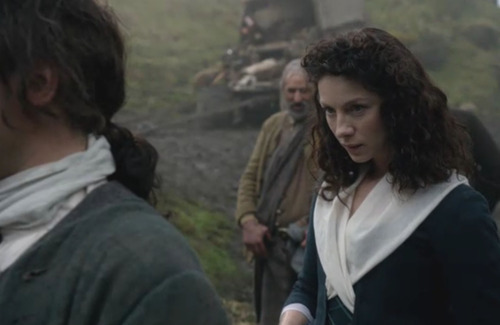
Don’t let Claire stick it to you! Anatomy Lesson #15 tomorrow: Crouching Grants – Hidden Dagger!
The deeply grateful,
Outlander Anatomist

Human Anatomy taught through the lens of the Outlander books by Diana Gabaldon and the Starz television series

Don’t let Claire stick it to you! Anatomy Lesson #15 tomorrow: Crouching Grants – Hidden Dagger!
The deeply grateful,
Outlander Anatomist
Happy Valentine’s Day!
Confession time: I have wanted to do a lesson on the anatomy of a kiss for a very long time. Today is that day! Welcome to Anatomy Lesson #14: The Lips (and a little tongue too).
Now, you may think there is little anatomy of the lips but there is so much info and complexity that we’ll be lucky to cover it in a single lesson!
I need models for our lesson and who better than Claire getting her first kiss (Starz episode 101, Sassenach). NO, not this kiss!! Claire usually has to urge Frank but she seems to like this kiss just fine and I’m betting there is a group of folks out there that give two thumbs for any face time with Frank.
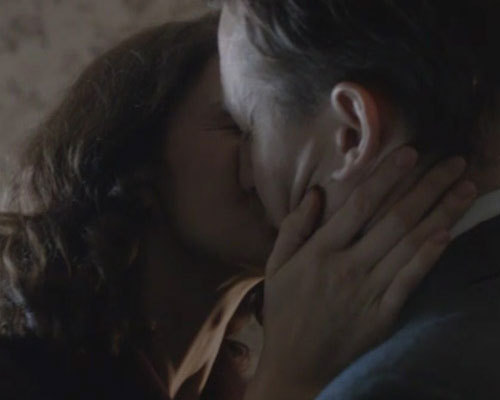
Alrightie then, how about this kiss (Starz episode 104, The Gathering)? NO, again? Geez, some folks are so hard to please!
Clearly Claire is not pleased with this kiss. Dougal’s efforts garner him a kick in the stones, a sharp slap and a wallop over the head with a stool! Dougal, best get ye gone man before you end up “paying a greater price!”
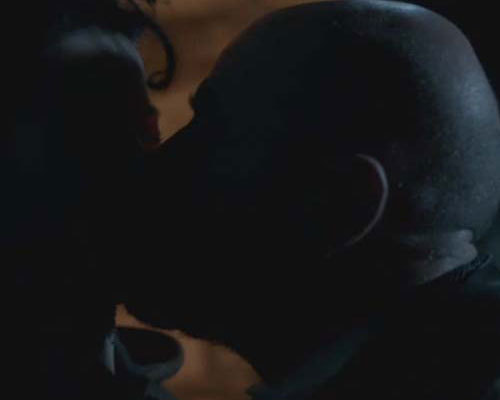
Ok, how about this one? Better? Ha! Getting down to business, Jamie and Claire seal the wedding vows with their first kiss (Starz episode 107, The Wedding). In Outlander book, Herself records the moment:
“More mumbling from the priest and Jamie bent to kiss me. It was clear that he intended only a brief and ceremonial touching of lips, but his mouth was soft and warm and I moved instinctively toward him. I was vaguely conscious of noises, Scottish whoops of enthusiasm and encouragement from the spectators,but really noticed nothing beyond the enfolding warm solidness. Sanctuary.”
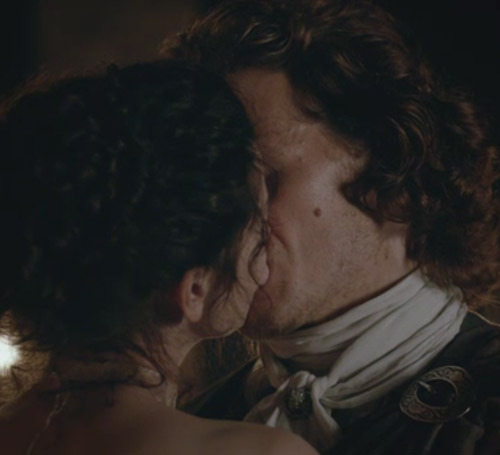
Whoa, Prof! This wedding kiss lasts waaay longer than one brief frame! How about some time lapse photography? OK, students, not to dwell on the point, but here’s Claire as she accepts Jamie’s kiss.
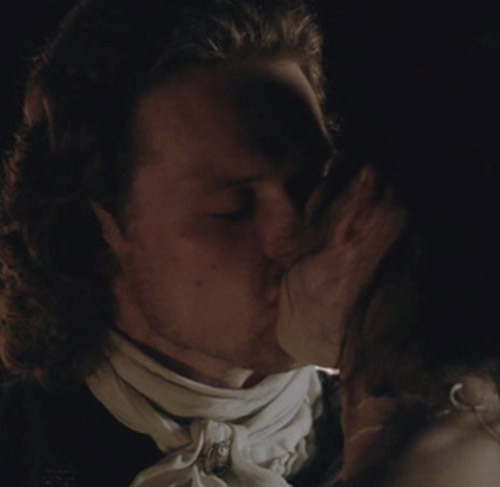
A wee release of the lips and more kiss! Aye, she gives as good as she gets.

More lip action; she really leans into it. Good lass!
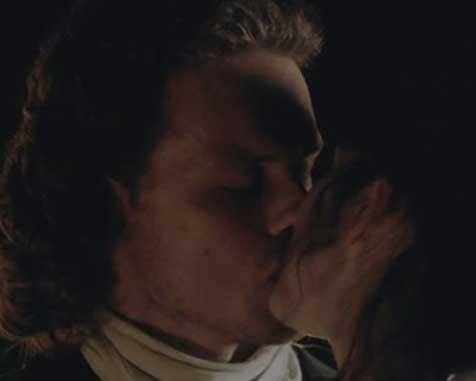
Finally, at the end of the lengthy lip-lock, Claire is on her tippy-toes panting for more. No ceremonial peck here. Well, when she kisses him like that maybe she isna so sorry to be marrying him after all.
Gasp! Mayhap we all best come up for a wee gulp of air!
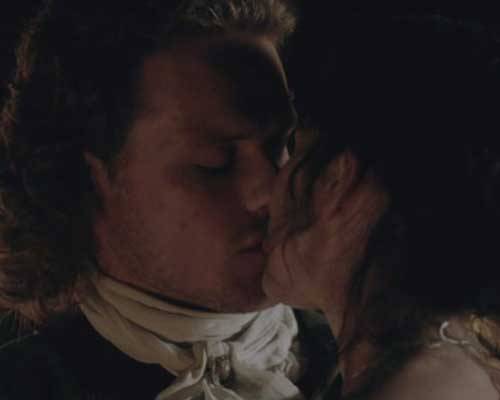
Can I ask you a question? “Did you like it?” He he – Jamie did!
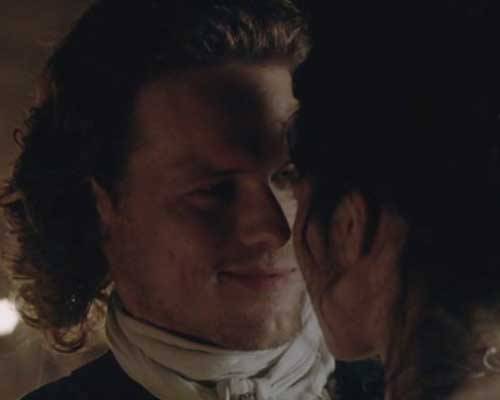
Topography of Lips: Now, on with the anatomy lesson! First, let’s begin with topographical (surface) anatomy of the lips. The lips are the part of the face surrounding the oral fissure, the external opening to the oral cavity (Image A, black arrow).
In anatomy, the upper lip (black bracket) extends from nasal septum all the way inside to the web of tissue near the upper gums. Similarly, the lower lip (red bracket) extends from the groove of chin (red arrow) inside to the web of tissue near the lower gums.
Lips are soft, pliable and mobile and almost prehensile in their movements. Consider that lips are active in biting, chewing, drinking, licking, swallowing, speaking, singing, screaming, sucking, crying, humming, etc. Wow, not too many areas of the body can lay claim to such a vast range of services! And, lastly, the lips are a tactile sensory organ and thus classified as an erogenous zone.
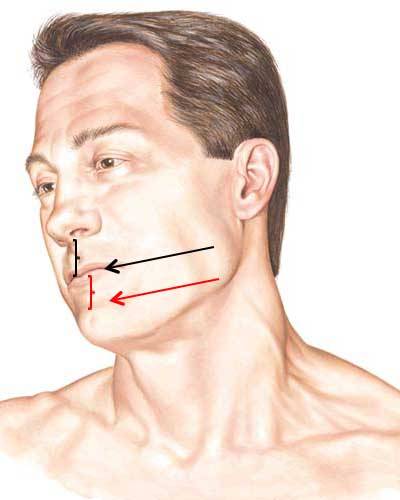
Image A
Image B shows upper frenulum and lower frenulum, webs of tissue that mark the
internal terminus of upper and lower lips. Frenula (pl.) help anchor lips
to gums.
Try this: Grasp your upper lip and lift locate the upper frenulum. Repeat with the lower lip.
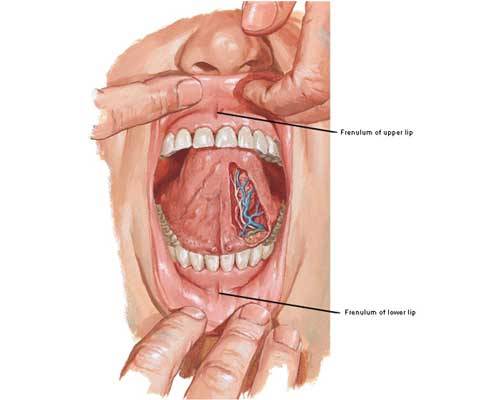
Image B
Vermillion Border: The vermillion border is the margin where facial skin meets upper and lower lips (Image C, black arrows) – the interface where lip liner is applied.
Vermillion Zones: In anatomy, the areas commonly called upper and lower lips are vermillion zones (Image C, black brackets) – the areas where lipstick is applied.
From vermillion zone to oral cavity, lips transition from thin, dry hairless skin to wet mucosa (blue arrows).
Try This: Look in a mirror and identify vermillion border and vermillion zones. Next, pull down your lower lip and find where the skin of the vermillion zone turns into wet mucosa of the inner lip. Got it? Good!
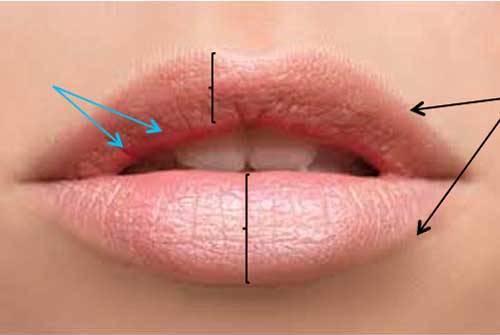
Image C
More Lip Structures (Image D):
Try this: Return to the mirror to locate these features of your own lips or,
better yet, use a partner!
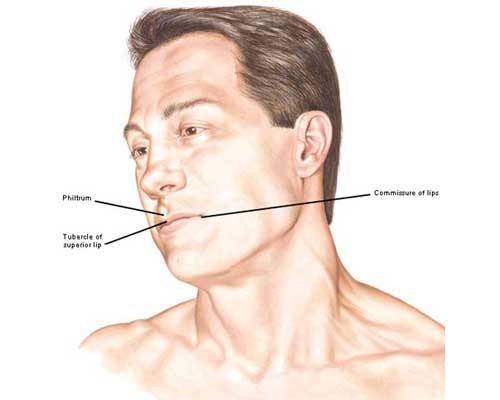
Image D
Always fun to throw in a wee bit of comparative anatomy…in mammals such
as the dog, the philtrum is more extensive, a midline cleft extending from nose through upper lip (Image E – red arrows) that may act as a channel to direct dissolved odorants towards the nasal septum.
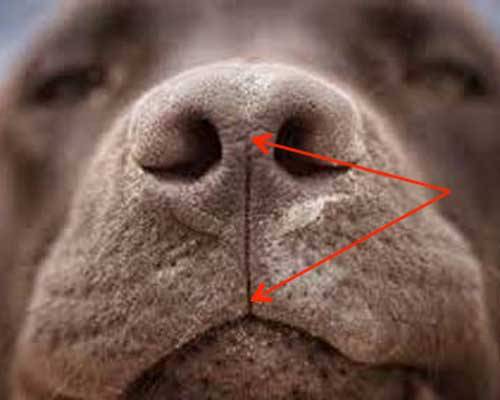
Image E
Cupid’s Bow: The vermillion border of our lower lip is an even line, but not so with the border of the upper lip which bears twin peaks, the so-called Cupid’s bow (Image F – red line) in honor of the weapon born by Cupid, Roman god of erotic love. And, the peaks of the bow coincide with philtral pillars (black arrows). The more prominent the peaks of Cupid’s bow, the more obvious are the philtral pillars.
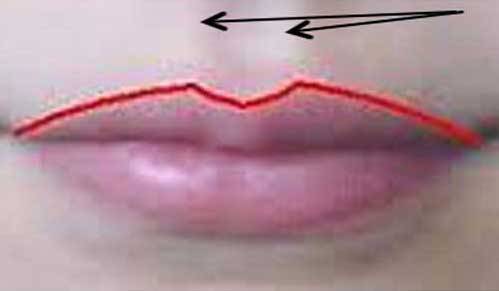
Photo F
No surprise here, but Jamie’s upper lip demonstrates a prime and manly example of Cupid’s bow and its associated philtrum (Starz episode 102, Castle Leoch) but I wager you already ken this. Wink, wink. His bow is well-defined (mmphm) and his upper and lower lips are picture perfect. Studies show that lip size in men is linked to sexual appeal. Subjects in these studies preferred men with masculine lips, neither too large nor too small. Sound like anyone you favor?
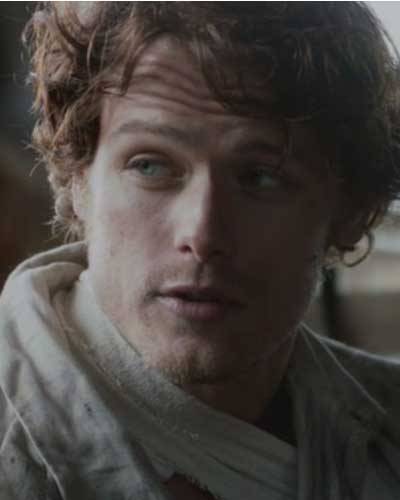
Starz Claire has absolutely beautiful lips that are full, expressive and verra feminine!
They define her face to a large extent and along with her eyes were features I
noticed first (Starz episode 109, The Reckoning). Again, psychology studies have
shown that the larger a woman’s eyes and the fuller her lips, the more desirable and feminine she was perceived by participants of these studies. Lipstick is thought to enhance this underlying perception.
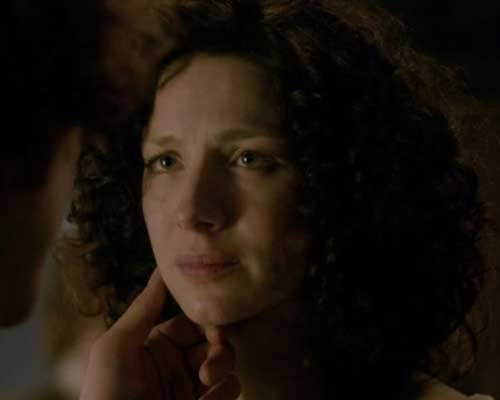
Microscopic Anatomy of Lip: Let’s turn from surface anatomy to the lip as seen in a microscope. Microscopic anatomy is AKA histology (Greek meaning tissue knowledge). Considerable technology is required to prepare tissues for microscopy: samples are imbued with paraffin (sometimes plastic), sliced very thin, picked up on glass slides and stained before examination. How thin is the slice? Well, it would be roughly 6 µm (.006 mm or .00023 in) – thin enough for light to pass through the slice.
Image G is a tissue section of lip as view with a microscope (Image G). It takes
some skill to recognize subtle differences, but the top box surrounds a patch
of facial skin with hair follicles, sweat and sebaceous glands (Anatomy Lesson
#5 and Anatomy Lesson #6); the left box encloses the vermillion zone of thin
skin sans hair and glands; the bottom box surrounds a patch of wet mucosa
(living cells throughout the surface layer). Look closely: the black arrow
points to dovetails (interdigitations) between the dark red thin skin and the deeper
pink-blue dermis. Let’s take a closer look:
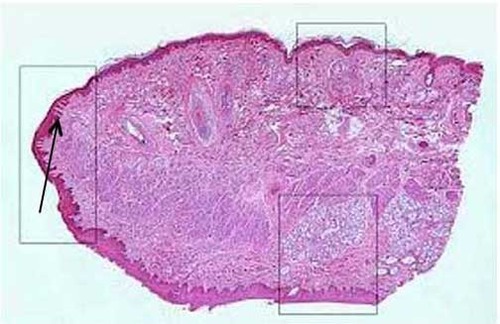
Photo G
Hey, students, wake up! Stay with me now – I can see you nodding off! Here, this might help (Starz episode 102, Castle Leoch). Oh, weel, I see that got your attention. Talk about lips doing their job and giving us a full wattage smile!
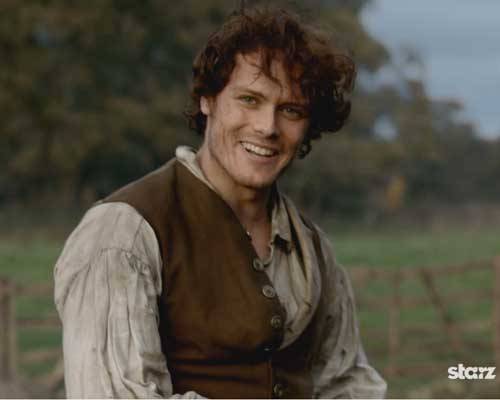
Photo H is a much higher magnification of the dovetail region indicated by the arrow in Photo G. See the odd pink oval structure that resembles shredded wheat or
venetian blinds (Photo H-black arrow)? This is a special sensory body first identified by Georg Meissner, a German anatomist and physiologist (1829-1905). These structures, named Meissner’s corpuscles are excited by light touch. The dermis of
erogenous zones, such as the lips, contains higher concentrations of Meissner’s
corpuscles than non-erogenous regions. When excited by light touch, the nerve
endings fire and information is transmitted along nerves to the brain.
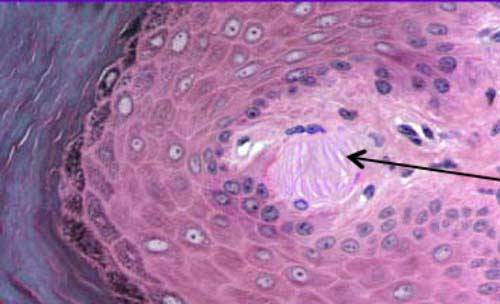
Photo H
Photo I is an artist’s rendition of a Meissner’s corpuscle. The lavender and black region is overlying thin skin; the gold and black structure is the corpuscle. Ergo, increased numbers of these touch-sensitive structures explains the basis of the so-called erogenous zones of the body.
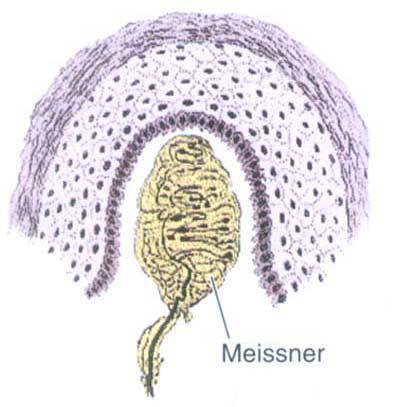
Photo I
Break time for practical
application of our knowledge about the lips: From Outlander, Herself quotes the Latin poet, Catullus:
“Then let amorous kisses
dwell
On our lips, begin and
tell
A Thousand and a Hundred
score
A Hundred, and a Thousand
more.”
Well, Jamie and Claire dinna disappoint. There are many amorous kisses shared by these two in Starz episodes 107 and 108. I was actually surprised by the frequency as I worked on this post. Gah! Messed with my sleep patterns!
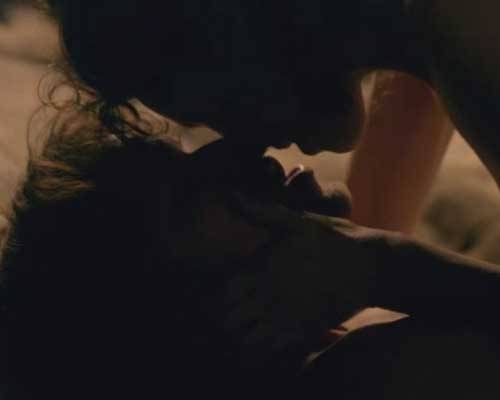
Now let’s move to gross anatomy of the lips. Do you recall from Anatomy Lesson #11 the name of the muscle surrounding the oral fissure? If you said orbicularis oris, you get 100 points! For years, anatomists taught that orbicularis oris was a circular, sphincter-like muscle that contracted like a camera diaphragm to close the oral fissure (Photo J). Well, recent studies have proven this is not the case.
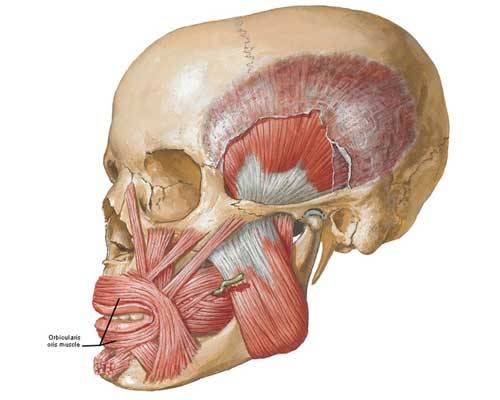
Photo J
Orbicularis oris is composed of four interlacing quadrants of muscle (Photo K – right side only): upper left, upper right, lower left, lower right. Further, each quadrant is divided into two parts: fibers of the vermillion zone form pars marginalis (Latin meaning marginal part) and fibers outside the vermillion border form pars
peripheralis (peripheral part). Doing simple math, this means our oral fissure is surrounded by eight interactive layers of orbicularis oris. This arrangement lends major control over shape so orbicularis oris is proficient at closing and puckering the lips.
Also, notice the mass labeled modiolus (Photo K)? This is a paired fibromuscular node just inside the commissures of each lip.
Try this: slip a clean thumb inside a corner of your mouth about 0.5 in (1.25 cm); close your index finger against the thumb. You should feel a thickening; this is the modiolus. At least seven facial muscles connect to or pass through each modiolus (one on each side) making it extremely important to facial symmetry. While performing surgery of the lip area, reconstructive surgeons strive to symmetrically align the modioli (pl.); once these are secured, associated facial muscles of each side are more likely to balance. Notice that orbicularis oris fibers attach to the modiolus.
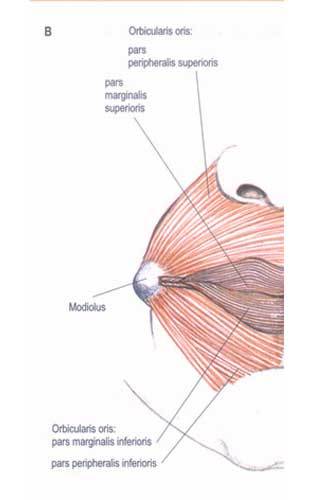
Photo K
The following line drawing (Photo L) shows how the upper lip changes shape during contraction of orbicularis oris. Imagine a midline vertical slice (midsagittal plane) through the upper lip, then view it from the side; the stick drawing is a simple rendering of that slice. The pink line shows the lip shape at rest; the blue line shows the lip flattened during a pucker. The shape-shifting is due to contraction of orbicularis oris.
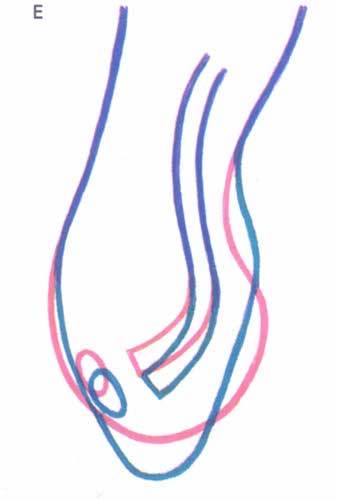
Photo L
Here’s a verra good example of lip puckering by Jamie’s orbicularis oris as he plants a lovely one on Claire’s lips. Good job, lad! He’s a terrific anatomical model as I keep saying (over and over and over). Ha! Well, it’s true!
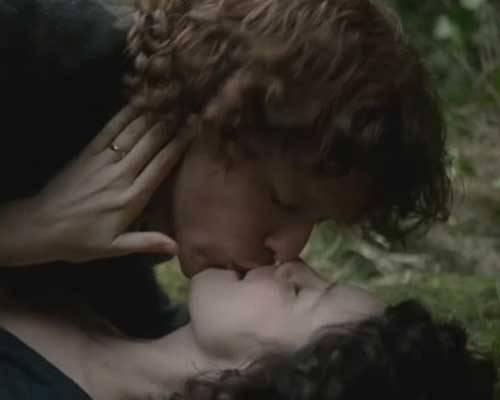
Time for another interlude: how about this image from Starz episode 107, The Wedding at the end of the first amorous kiss between Jamie and Claire? Oh, Jamie, your lip looks a wee bit swollen. Did you get thumped by a horse? Those fillies can be
dangerous! Whinny!

And yet another drop-dead wonderful kiss between our hero and heroine! The next quote doesn’t exactly fit wi’ the image (Start episode 107, The Wedding) but I’m betting ye can suffer through it. Herself writes in Outlander book:
“He leaned down and gently fitted his mouth over mine. I had kissed my share of men…Jamie, though, was something different. His extreme gentleness was in no way tentative; rather it was a promise of power known and held in leash; a challenge and a provocation the more remarkable for its lack of demand. I am yours, it said. And if you will have me, then…I would, and my mouth opened beneath his…”
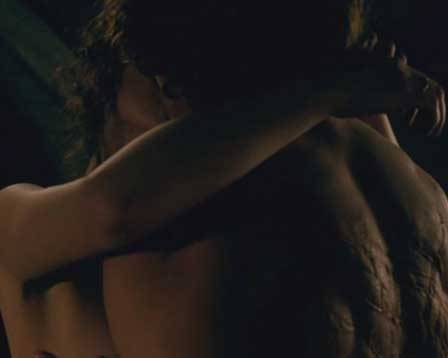
Hey, yoo hoo, back to anatomy. I think I lost ye again, ha ha! It’s OK, I lost it myself…So, you may recall that several muscles of facial expression insert into orbicularis oris (Anatomy Lesson #11 and Anatomy Lesson #13) adding their tug on the lips. LLSAN, levator labii superioris and zygomaticus minor act as retractors to lift and curl the upper lip; platysma and depressor labii inferioris pull down and curl the lower lip
(Photo M). The left side of the drawing (on your right) shows the pull of the three elevator and two depressor muscles acting as retractors on orbicularis oris.
All of this detail reveals that our lips have a complex muscular framework, an arrangement lending impressive control over the lips and how they might engage in kissing: pucker, no pucker, curl, no curl, suction to produce a smack. Aye, if the lips are slightly curled and mild suction applied, the kiss produces an audible smacking sound. Re-watch (for the umpteenth time) Starz episode 107, The Wedding, and listen to the end of the wedding kiss; you hear a soft smack. Verra, erm, satisfying! Now ye know how that happens.
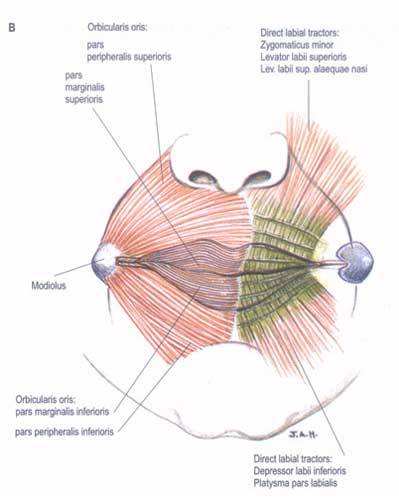
Photo M
Many would argue that a kiss will be neither complete nor completely satisfying without a wee bit of tongue. I dinna have space to cover all tongue anatomy which is complex and lengthy. But a brief keek will suffice. The tongue core is very nearly all muscle; it participates in swallowing, taste, and speech. Its free surfaces are covered
with wet mucosa similar to that of the inner lips. Its top and sides are embellished with wee bumps, the papillae, some of which house taste buds. Photo N is an image of the tongue taken with a scanning electron microscope (SEM – Anatomy Lesson #5 and Anatomy Lesson #6), an instrument that greatly magnifies an object because it illuminates using an electron beam rather than light rays. Papillae on the top of the tongue are very apparent (red arrows). Check out your own papillae in a mirror; they come in 3 or 4 different shapes. Your taste buds are microscopic so ye cannot see them.
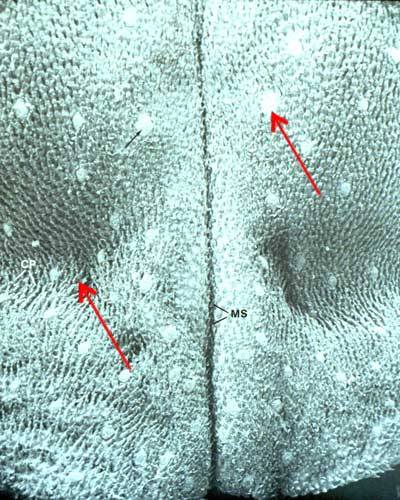
Photo N
For the tongue to join in a kiss, its muscles must activate. Hard to believe but the tongue contains nine different muscles: four paired and one unpaired (Photo O)! Paired muscles are extrinsic meaning they arise from surfaces outside the tongue but end within it. The unpaired muscle, consisting of four layers, is intrinsic meaning the layers arise from and end within the tongue itself.
But, perhaps the four layers of intrinsic muscle are most appreciated in kissing. They arise from various parts of the tongue and blend with the extrinsic muscles. Acting alone or together the four layers curl, shorten, dome, narrow, elongate, widen or fatten the tongue. Whew, that’s quite a list! Intrinsic muscles give the tongue precise and highly variable mobility for speech, swallowing and (although not listed anatomy texts) for kissing! So, consider this is why a kiss with tongue can be so remarkably creative. Try it out! Ye have my permission.
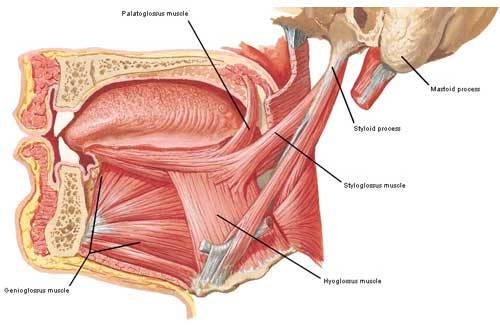
Photo O
This last image (Starz, episode 107, The Wedding) is dark, but here Jamie serves once again as our anatomical model; the camera clearly loves him! This is just after Claire wraps him in a lover’s shroud of his own plaid. Oh, aye, his tongue is involved in this kiss. If ye canna see it here, go watch the episode again. OK, ye can all get up off the floor now!
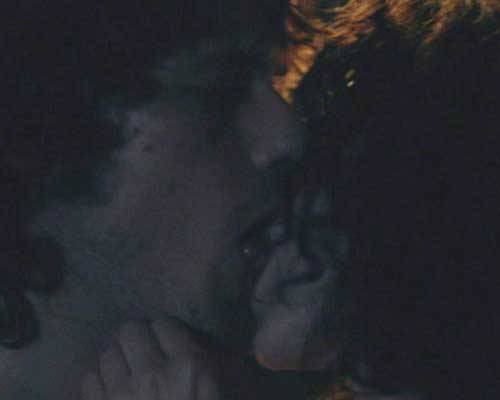
So kisses involve lips and mayhap tongue and given the number of muscles involved
humans are granted considerable creative license in their use. Hope ye get to use yours on this beloved day and that ye all enjoyed learning about those busy lips and tongues and the anatomy of a kiss.
And if ye dinna have a partner today, then remember that your body contain trillions of cells each whispering “Tha gaol agam ort!” Gaelic for “I love you!” If our cells didna care, we probably wouldn’t exist.
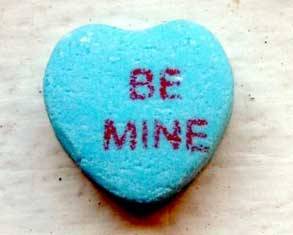
Let’s end the lesson with a wonderful quote from Les Miserables by Victor Hugo (1802–1885):
“How did it happen that their lips came together?
How does it happen that birds sing, that snow melts,
that the rose unfolds, that the dawn whitens behind the stark shapes of trees on the quivering summit of the hill?
A kiss, and all was said.”
And for those who are new to my blog, a wee note of explanation: I follow the convention of using Outlander character’s names rather than actor’s names. This gives the cast at least one degree of separation and a wee bit of respect as I
dissect their bodies with words! I hope ye all understand!
The deeply grateful,
Outlander Anatomist
Follow me on Facebook and Twitter!
Photo Credits: Starz, Gray’s Anatomy 39th ed., Netter’s Atlas of Human Anatomy, 4th ed., Clinically Oriented Anatomy, 5th ed., Hollingshead’s
Textbook of Anatomy, www.emedicine.medscape.com, www.elementsofmorphology.nih.gov, www.britannica.com, www.instruction.cvhs.okstate.edu, www.siumed.edu, www.Wikipedia.org, www.iup.ui.edu, www.bio.rutgers.edu, www.wallpapers.brotherssoft.com
Welcome colleagues! Today, Frank’s handsome visage gets the spotlight and everyone kens that BJR deserves to be on the dissection table for a change. Welcome to Anatomy Lesson #13: Anatomy of the Face. Today, we will expand on muscles of facial expression (Anatomy Lesson #11) as well as other facial anatomy; Frank and BJR will aid us in our quest.
Warning! If ye are a wee bit squeamish, this lesson includes several illustrations of the face minus skin.
Let’s start wi’ Claire as she stumbles upon Johathan Wolverton Randall, Esquire, Captain of his Majesty’s Eighth Dragoons (Starz episode 101, Sassenach). A doppelganger for Frank if I ever saw one! Herself writes:
“…the man himself might have been Frank’s brother. There was the same lithe, spare build and fine-drawn bones; the same chiseled lines of the face; the level brows and wide hazel eyes; and the same dark hair, curved smooth across the brow.”
His deeply-grooved skin is weathered to a “deep-baked tan.” His eyes…..…cold, calculating, assessing, dispassionate and perhaps weary? Well, it’s exhausting being a cold, bloody bastard! Burrrr!

Compare and contrast BJR’s features wi’ Frank’s. Here, Frank leaves Inverness for Oxford on December 21, 1945 (same day General George S. Patton dies). He stops his roadster near the entrance to Craigh na Dun, his face a blank canvas (Starz episode 108, Both Sides Now). His scholar’s mind entertains Mrs. Graham’s explanation of Claire’s disappearance so he takes a wee road trip up the craigh. Verra interesting how our Starz Frank can make subtle changes in his facial expression to differentiate between his evil ancestor and his current, pensive self.
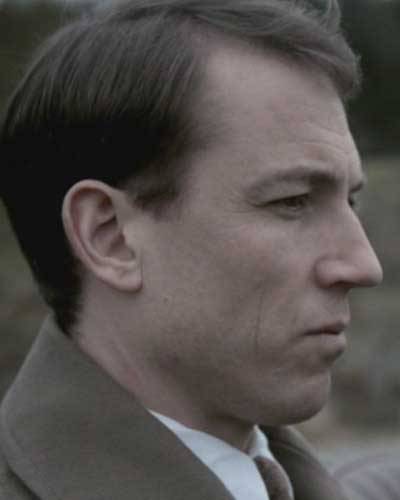
Ye now ken that muscles (and nerves) control facial expression. So, let’s do a quick and brief review of the twelve muscles of facial expression studied in Anatomy Lesson #11 – aye, there were many (Photo A). All are bilateral (paired) except the unpaired orbicularis oris. Here’s a wee chart of those muscles and their actions:
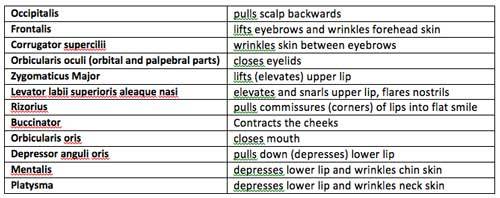
And, here’s a visual review of the same twelve muscles covered thus far (Photo A):
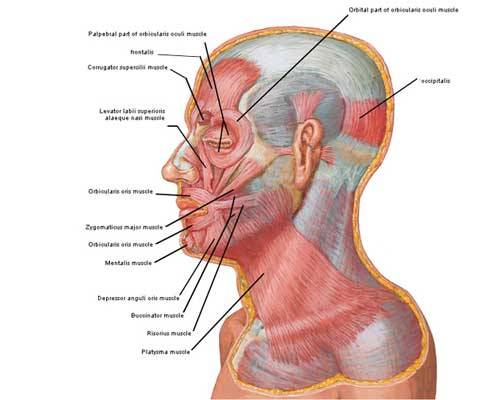
Photo A
And just to get us in the mood, here Frank is seated in Rev. Wakefield’s study, looking at Claire (Starz episode 105, Rent). His flat smile is largely due to contraction of powerful rizorius muscles such that his laugh lines or skin creases assume a vertical orientation (red arrow) rather than the more common nasolabial (nose-to-lip) fold that characterizes most smiles. BTW, he asks Claire: what she was doing out there on the desert wi’ Uncle Lamb (Quentin Lambert Beauchamp)?
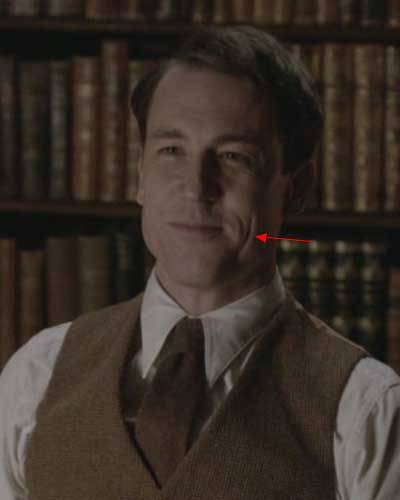
Weel, Herself explains in Outlander book what Claire was doin’ in the desert wi’ Uncle Lamb; what any young girl does after the death of her parents at age 5:
“…to the Middle East, to South America, to dozens of study sites throughout the world. Had learned to read and write from the drafts of journal articles, to dig latrines and boil water, and to do a number of other things not suitable for a young lady of gentle birth.”
Apparently, she was also rollin’ and lightin’ cigarettes (Starz episode 5, Rent) and gettin’ her first kiss from a nine-year-old dragonman’s son (Outlander book). Ooooh, what Mrs. Fitzwould say aboot that; the French corset was bad enough!
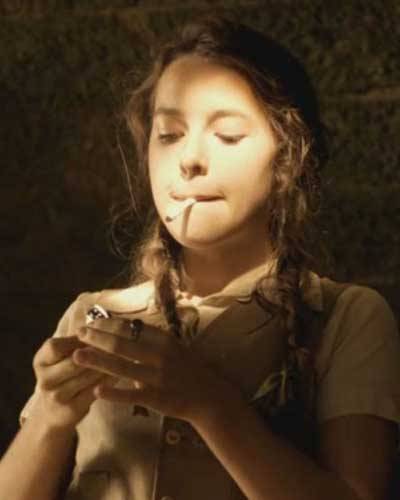
Now, let’s add a few new muscles of facial expression. Here’s a new lip depressor, the paired depressor labii inferioris muscles (Photo B). Each attaches from mandible to orbicularis oris of the lower lip. Try this: conjure the deepest frown possible. Feel tension or firmness at the sides of your neck, in the chin, and below the lower lip because four pairs of muscles are contracted: platysmas, mentalis, depressor anguli oris and depressor labii inferioris. Aye, it takes four pairs of muscles to frown!
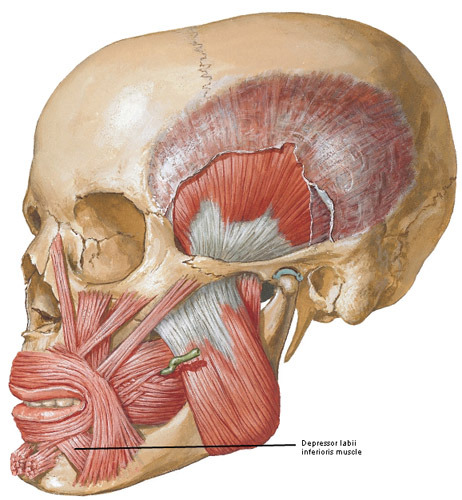
Photo B
We see Frank contracting depressor labii inferioris, depressor anguli oris and mentalis muscles as he tells Claire “So?” It doesn’t matter that his parents are stuck waiting for them at the restaurant (Starz episode 107, The Wedding); he wants to marry her right then and there! So, off to the justice of the peace (or whoever did the marryin’ back in 1940s England) with Claire slipping and sliding on her heels!
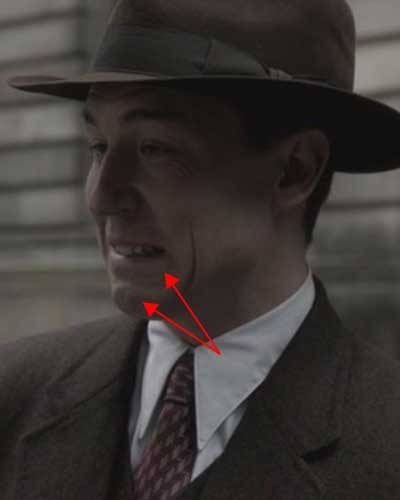
But, wait here’s three new lip-lifters for you and all are paired (Photo C). Levator labii superioris muscles span from maxillary and zygomatic bones to orbicularis oris. Zygomaticus minor muscles arise from the zygomatic bone to end on orbicularis oris. Finally, levator anguli oris muscles arise from maxillary bones and end on orbicularis oris near the angle of the mouth.
Try this: Grin your biggest grin ever and feel tension under cheeks and at sides of nose. Levator labii superioris, levator labii superioris alaequae nasi (LLSAN), zygomaticus major, zygomaticus minor, rizorius and levator anguli oris are all contracted. It takes six pairs of muscles to smile, ye ken.
Yes, I know about the fable that it takes more muscles to frown than to smile. Not so. Just to be thorough, a genuine smile also incorporates contraction of orbicularis oculi to make eyes crinkle. A fake smile leaves out the eyes!
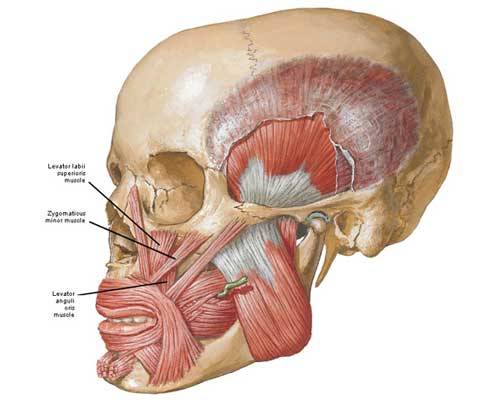
Photo C
Now, here’s BJR in full grin – mayhap better described as wicked glee (Starz episode 108, Both Sides
Now)! Herself writes:
“The smile had not left Randall’s features since Jamie’s appearance. Now it broadened enough to show the pointed dog teeth.”
Yup, his canines are showing (hummm… he would make a good vampire!). Claire and Jamie just made his day! Oh, aye, they delivered themselves into his power and he’s more than thrilled. All six pair of lip lifters are activated along with his frontalis muscles. Fort William isna a hotbed of humor, ye ken? At least not wi’ this sadistic bastard stalking the tiles and wielding a nine-tailed cat!
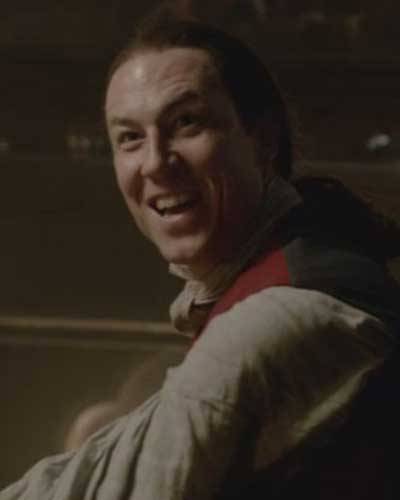
Next, let’s review a couple o’ skull bones (Photo D). The paired zygomatic arches or cheek bones receive contributions from temporal (pink) and zygomatic (orange) bones (Anatomy Lesson #8). The large unpaired mandible (Anatomy Lesson #11) is the movable part of the jaws that houses the lower teeth.
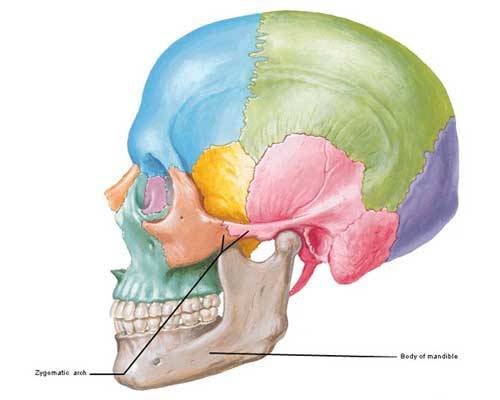
Photo D
Now for another new pair of facial muscles: although classified as muscles of mastication, the masseters add to facial expression (Photo E). Each masseter (Greek meaning to chew) spans from zygomatic arch to mandible. Contraction of masseters closes the mandible exerting 200 lbs (90.7 kgs) of pressure on the molars! Based on weight, masseters are the body’s strongest muscles. Very powerful!
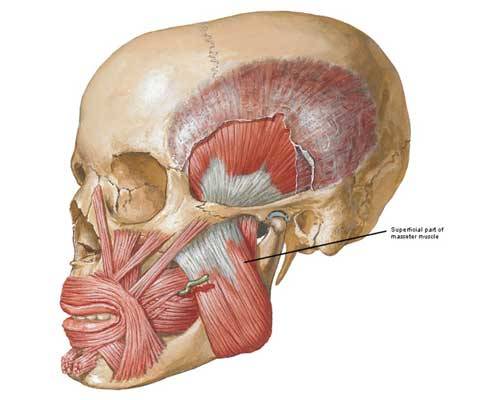
Photo E
The parotid glands, major salivary glands, overlap the upper part of each masseter (black arrow) and empty saliva into the mouth via a pair of parotid ducts (Photo F).
Try this: place your fingers on the chin and move them back to the angles of the mandible. Now, bite down firmly; feel the tissue harden under yer fingers? These are your masseters! Now, relax the masseters suddenly – did the mandible pop open? Aye, this is due to tissue recoil and pull of gravity. Now with fingers in the same place, move them upward a wee bit and press. Ye may feel warmth and the flow of saliva in your mouth because you just pressed on one or both parotid glands! You may not know this, but the mumps virus targets the parotid glands.
Last maneuver: open your mouth wide and say ahhhhh….. (as in the dentist’s office) – a very deep pair of muscles just contracted to perform that movement but we’ll puzzle those out in a later lesson.

Photo F
Now, hereeeeee’s Jamie! I know, I know, I just can’t write a lesson without him as an anatomical model – he’s just way toooo perfect! Steady. Steady. Staying completely scientific, he provides the best example of masseters in the series. Here’s Jamie and Claire at the stables (Starz episode 102, Castle Leoch) sharing a delightful lunch made of UST (a.k.a. unresolved sexual tension).
Jamie has quite an appetite, ye ken? Snort! He’s telling Claire the grim story of how he became outlawed. There’s a swelling (mmphm) over his right mandible; jaw is clenched because both masseters are contracted! Besides chewing, contraction of these muscles conveys intense emotion such as frustration, concern or anger. Och! I almost forgot…do ye ken the prominent ridge on Jamie’s neck (gold arrow)? Can ye name it?
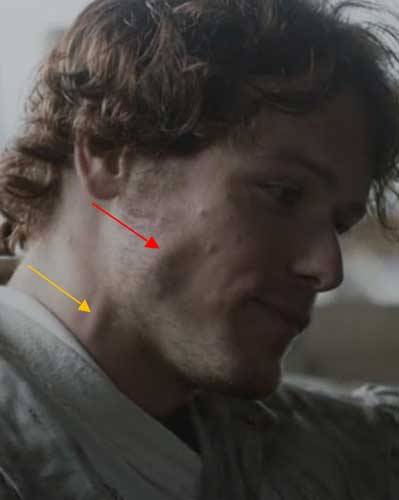
Oh, aye, if ye said right external jugular vein (Anatomy Lesson #12), a gold star for you! Good work!
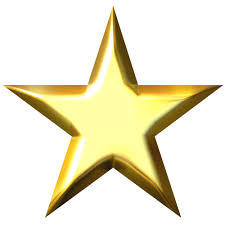
Here’s another muscle adding ta facial expression: classified as muscles of the orbit, levator palpebrae superioris muscles lift the upper eyelids. They run from bony orbits to superior tarsal plate (Photo G). As the levators contract, the upper eyelids lift.
Try this: gently pinch an upper lid between thumb and index finger. Feel a rubbery mass? This is the
superior (upper) tarsal plate. The lads in my elementary school loved to evert their upper lids to gross out the lassies – doable because of the tarsal plates. Ye can also feel a wee version in each lower lid but no muscles to move them; gravity and tissue recoil open the lower lids.
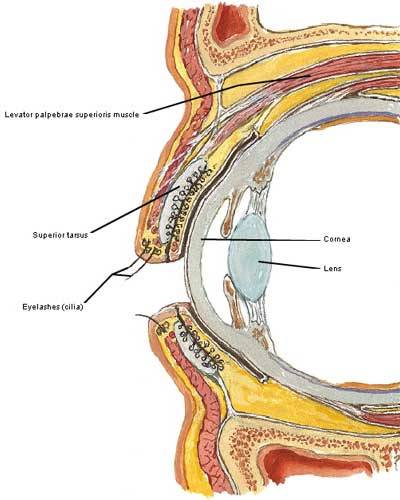
Photo G
Movements of levator palpebrae superioris muscles are easy to demo on both Jack and BJR because both like to tweak their upper lids. Starz episodes capture the movements best, but here Frank tweaks both eyelids as Claire’s train leaves for the front lines while he stays behind to do WW II intelligence work (Starz episode 103, The Way Out). She will not have him use his influence to keep her home! Bye, bye Frank.
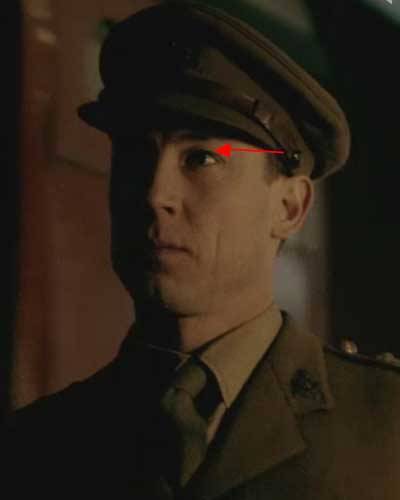
Not to be outdone, BJR contracts his levator palpebrae superioris muscles after tellin’ Dougal that Claire must be returned for further questioning by next day or he will suffer the consequences even unto death (Starz episode 610, The Garrison Commander)! Speaking of death, did ye notice the dead look of his eyes? Understand that his irises are hazel and in this light we cannot distinguish the boundary between pupil and iris. In effect, this enlarges the pupil lending a more detached and threatening appearance to the eyes.
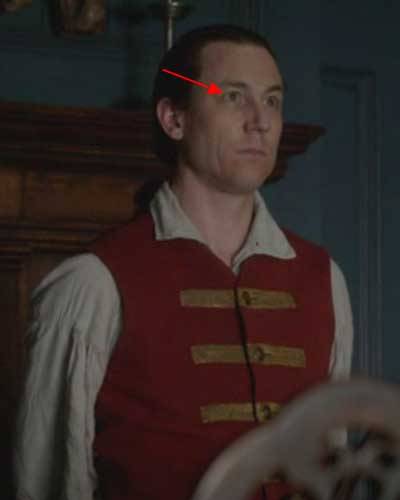
Now, let’s use Frank and BJR expressions for more review. Frank (Starz episode 108, Both Sides Now) has just beaten two guys within an inch of their lives and now his hand is closed around the
hyoid bone (Anatomy Lesson #12) of not-her-name Sally! His grin is flat and eyelids are slightly closed. And, oooh, his cruel smile doesna reach the eyes. In urban speak, this is known as smizing. Gives me the shivers! Remind ye of someone? Which facial muscles are contracted? If ye said rizorius and palpebral parts of orbicularis oculi then ye are correct! If ye said nothing, that’s OK too.
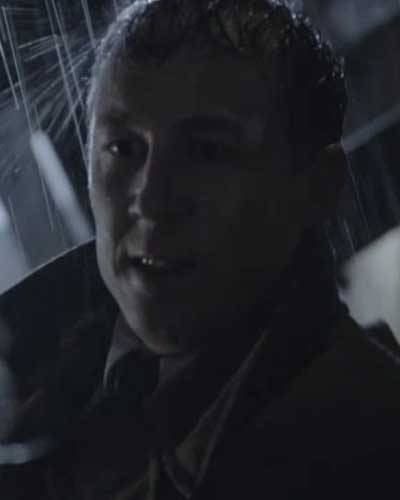
Call it weapon anatomy, but I must comment on the objet d’art that Frank pulls from his pocket in the alley off Drummond Lane (Starz episode 108, Both Sides Now). In the US, such a weapon is called a blackjack, perhaps a not-so-subtle reference to his sadistic ancestor? Frank worked in the Intelligence Unit at MI6 during WWII. He thoroughly beats and stomps his attackers suggesting he learned a wee bit about interrogation of a darker nature. Or, mayhap violence runs in his family line? After all, “evil knows but one cup.”
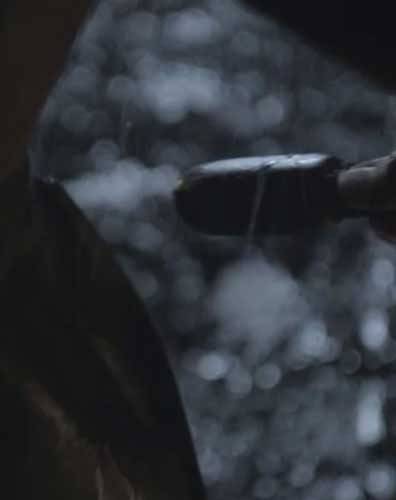
Wonder of all wonders: Claire makes BJR grin, a dangerous gambit to be sure! She tells him that we MacKenzies are all loyal subjects to the King – the funniest thing he has heard all week (Starz episode 108, Both Sides Now). Apparently, not much comedy goes on at Fort William.
Which facial muscles are contracted? This time, it is palpebral part of orbicularis oculi, rizorius and zygomaticus major because the flat grin is slightly lifted and the nasolabial (nose-mouth) fold as well as the vertical skin crease are now in play although the vertical creases are much more evident.
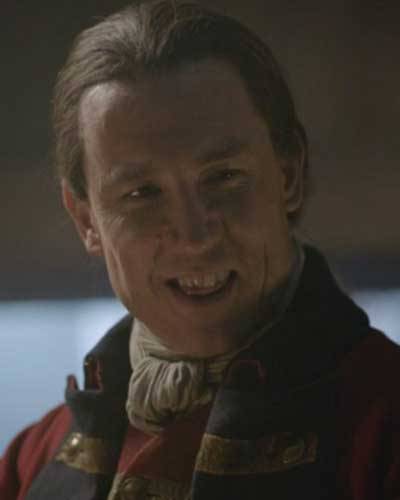
Next, Frank expresses grief at Craigh na Dun (Starz episode 108, Both Sides Now). He misses his wife even if he’s more interested in dusty old papers about his ancestors and she has to coax him into physical intimacy. Which muscles are contracted? The palpebral and orbital parts of orbicularis oculi, rizorius and zygomaticus major and likely mentalis as his chin skin is wrinkled.
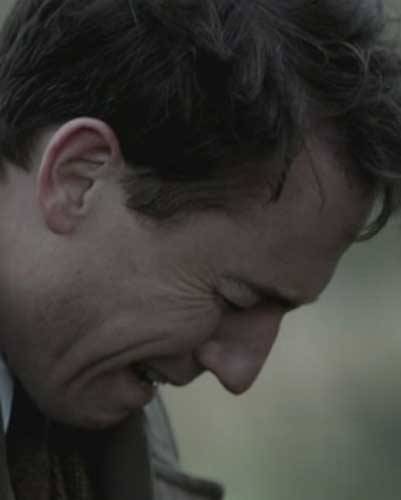
Now, this image of Frank is absolutely priceless (Starz episode 108, Both Sides Now). Funny man, Reverend Wakefield, explains his favorite theory of Claire’s disappearance: she gets disoriented,
falls into the Findhorn River and is swept 20 miles downstream all the way to Dunnaway Forest where she lives in a cave for seven weeks eating fish and frogs. Erm…Frank looks as if his best pal has gone bonkers! Which facial muscles are contracted?
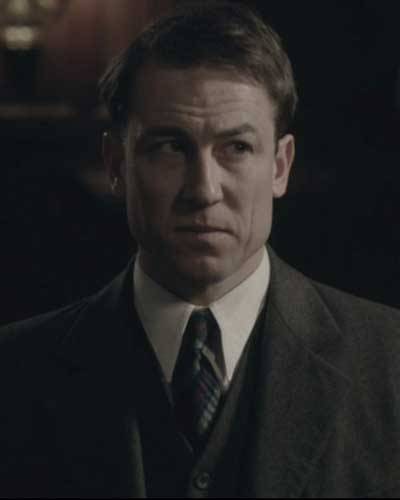
Well, obviously the frontalis muscles because his forehead is wrinkled, and corrugator supercilii (Anatomy Lesson #11) fer the deep wrinkle between the brows. Rizorius is contracted pulling the mouth into a grim line along with a slight downward tug by depressor anguli oris. Better the Findhorn River than the arms of another man! Another gold star to you for playing along!
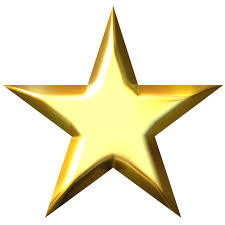
Did you find the Reverend’s theory laughable? Well, turns out something like this happened to an Australian woman last fall. She disappeared from a swimming hole in a Queensland rainforest. Gone for 17 days, she lost 17 kg (37.4 lbs) during her ordeal; surviving on insects, fish and river water. And, ye will not believe it but her last name is Fraser! Aye, ’tis the truth! You can not make this stuff up! Below is a photo of the area where she was lost.

Now for an Outlander Anatomy PSA about accepting differences:
Robert J. Oppenheimer once claimed that “understanding is a lot like sex. It’s got a practical purpose but that’s not why people do it normally…” Here is a wee bit of knowledge to open perspectives and loosen sphincters while studying the body.
Ye ken that each of us is different on the outside? Even identical siblings with the same genetic
material enjoy subtle nuances in body form. Well, years in the dissection lab has taught me that we are each different on the inside too! Every person has their own unique expression of muscles, bones, blood vessels, organ shapes and so on making every human different inside and out. This is cause for
celebration, not for shame.
A heartfelt thanks to Diana’s books and the Outlander cast for providing a platform whereby we may explore this simple truth.
The deeply grateful,
Outlander Anatomist
Follow me on Facebook and twitter!
photo creds: Starz, Netter’s Atlas of Human Anatomy, 4th ed., Clinically Oriented Anatomy, 5th ed., Hollingshead’s Textbook of Anatomy, 5th ed., The Guardian, Australia, Daily Mail Australia, www.wikipedia.org, www.commons.wikimedia.org, www.medical-dictionary.thefreedictionary.com